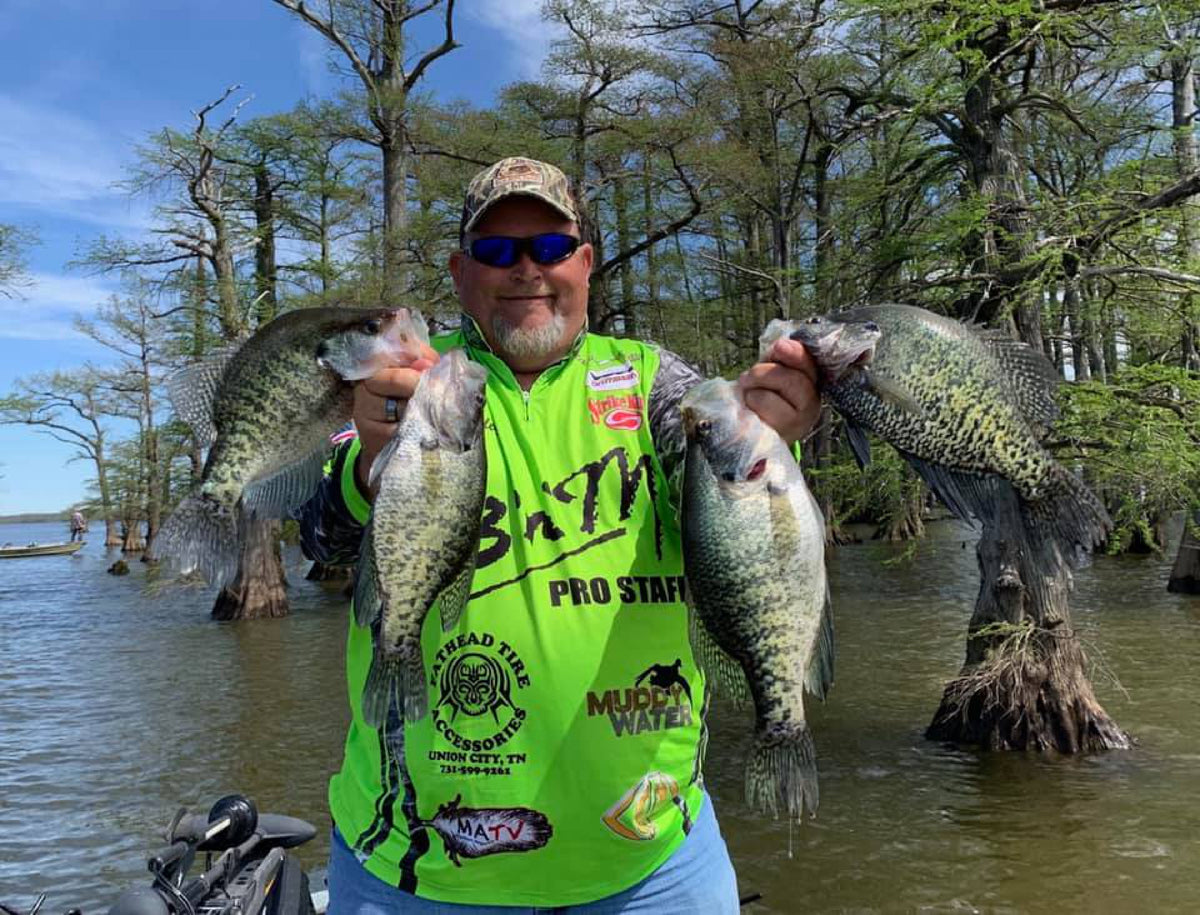Taylor Made To Fit
Taylor Made To Fit
Making your own jig heads is fun, affordable, and fits your needs
By Phillip Gentry
B’n’M pro staffer Brad Taylor has an enviable problem. His problem is the crappie he regularly catches in his home state of Mississippi are too big for standard sized jig heads. After searching around on the retail market and not finding what he wanted, Taylor decided that tailor making his own jig heads was the best way to go.
“I fish a lot on Grenada and Sardis, Enid and a few other Mississippi other lakes and our crappie are just huge,” said Taylor. “The problem is that most manufacturers use hooks in their jig heads that are too small for our fish.”
Taylor said he and tournament partner John Harrison discovered long ago that a ¼ oz jighead, the favorite size jig tied on the line when fishing during the spring and summer, comes equipped standard with a #2 hook. Taylor said he needed something bigger, like a 2/0 hook.

Making your own tackle is fun, affordable, and helps you tailor your baits to the way you fish.
After looking through the Barlow’s Tackle Shop online, he ordered some jig head molds offered by Do-It Molds and then had to add a little homemade ingenuity to fine tune the result.
“The standard ¼ ounce mold wouldn’t accept a 2/0 hook, so I took a Dremel tool and made some adjustments, enlarging the opening so it would accept the bigger hook,” he said.
First and foremost for making any bait involving a lead head or body is to obtain a good reliable mold and lead pot for melting lead and pouring into the mold. Custom molds can be made by a quality tool and die shop but the price for custom work can get real expensive compared to a pre made mold that will cost around $50, even if you have to do a little tinkering with it.
A good lead melting pot will ensure even lead heating and pouring and can be obtained for less than $100. Some good advice about obtaining lead - purchase pure lead from a plumbing supply store rather than use scrap lead, such as old tire weights, that contain a lot of alloys and don’t pour well. It’s best to pre-melt the lead into smaller, easier to handle bricks. During the meltdown process, any byproducts will separate during the melting and can be skimmed off prior to placing in your lead pot.
Taylor paints his jig heads after he’s poured them. He uses powder paint and heats the heads and then dips them in the powder coat paint. He first uses white as a bright base coat and then dips either pink or orange to finish off the head.
“People tell you eyes catch fish, but I’ve never felt painting on eyes was worth the effort,” said Taylor. “I also hear people say that big hook will tear the mouth of a paper-mouth crappie, but I catch Mississippi crappie 10 to 1 compared to store bought jigs with smaller hooks. You get that 2/0 Aberdeen hook in him, he’s coming to the boat.”

Weiss Lake guide Darrell Baker discovered he could make his own tackle and catch more crappie in the process.
Fellow B’n’M pro-staffer and Weiss Lake crappie guide Darrell Baker can relate to Taylor’s sentiments. For years before they became popular, he could not find 1/24 oz jig heads. He had discovered that 1/24 ozwas the perfect weight for long line trolling on Weiss and when he couldn’t find them, he started making them.
“I took a 1/32 oz production mold that had 8 cavities in it, but I had to modify it as well,” said Baker. “I used a drill with a wood bit and carved out just a little bit to make a slightly bigger mold. It took some trial and error but I finally got all 8 of them exactly on 1/24 of an ounce.”
Baker’s other desire was to make a jig head that accepted a #4 sickle hook. He liked the lower profile of the hook and the sharpness and penetration of the design.

Tackle molds and accessories come in all varieties and can easily be purchased from a number of tackle making retail outlets.
Like Taylor, Baker also dipped his jig heads in powder coat paint. Red has always been his color of choice. Likewise he never put much stock in painting eyes.
“When you’re shooting docks as much as we do, you lose a lot of jigs,” said Baker. “It’s just easier to have a big supply. Pour them, dip them, hang them a little while and then put them in the closet till you need them.”
Making your own tackle doesn’t end at just jig heads. Many anglers have molds to make spinnerbaits, jigging spoons, and terminal weights.
At B’n’M we’re all about helping you catch fish. Visit us online at bnmpoles.com
Also in Weekly Tips and Techniques

Winter Crappie Fishing Strategies with Lance Hughey
B’n’M pro-staffer Lance Hughey said it never gets too cold to catch crappie.

North Texas Fall Crappie Fishing with Brian Carter
Texas crappie pro-staffer Brian Carter loves to pitch jigs at standing timber during the fall of the year.

Summer Crappie Fishing with Billy Blakley
B’n’M pro-staffer Billy Blakley claims the copious amount of rainfall so far this year has created some great summer crappie fishing on Reelfoot Lake.
